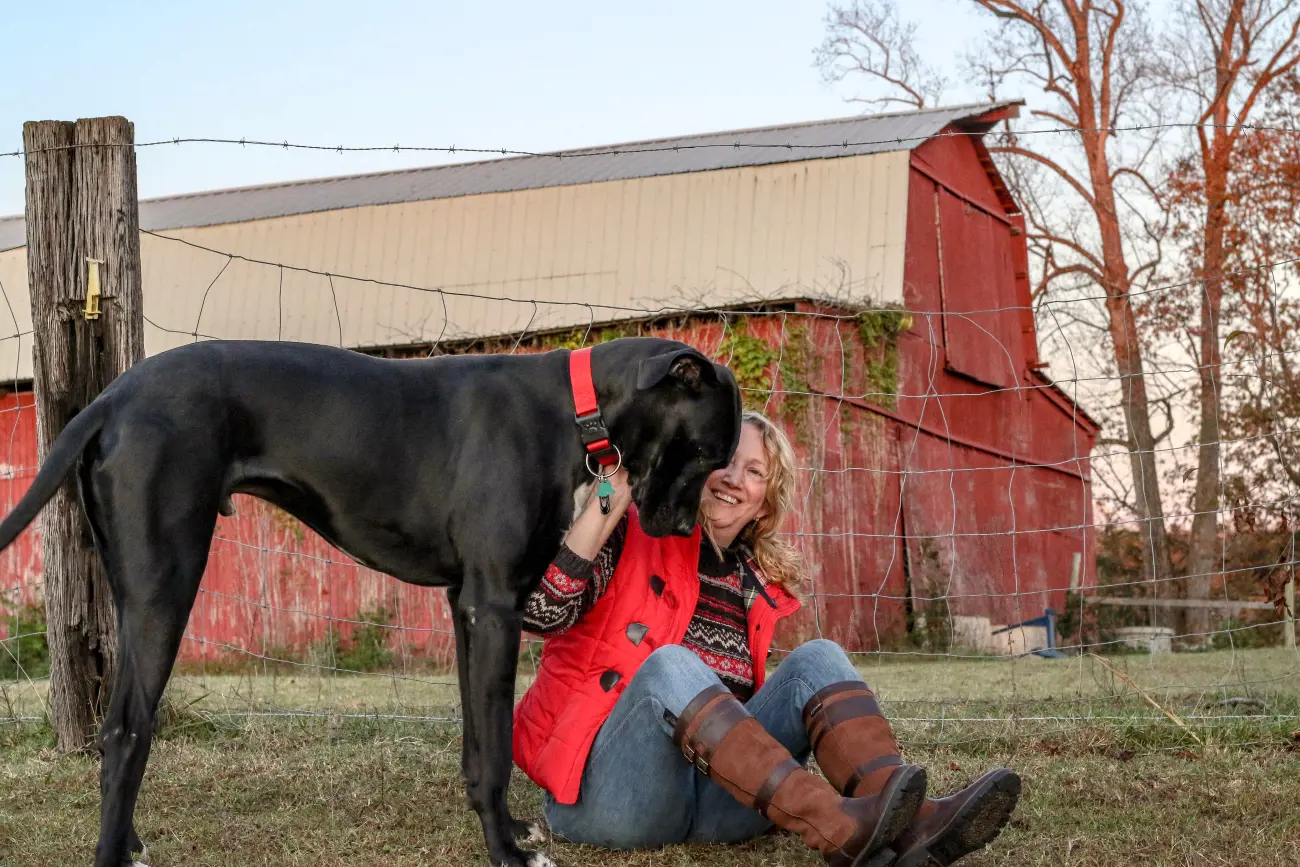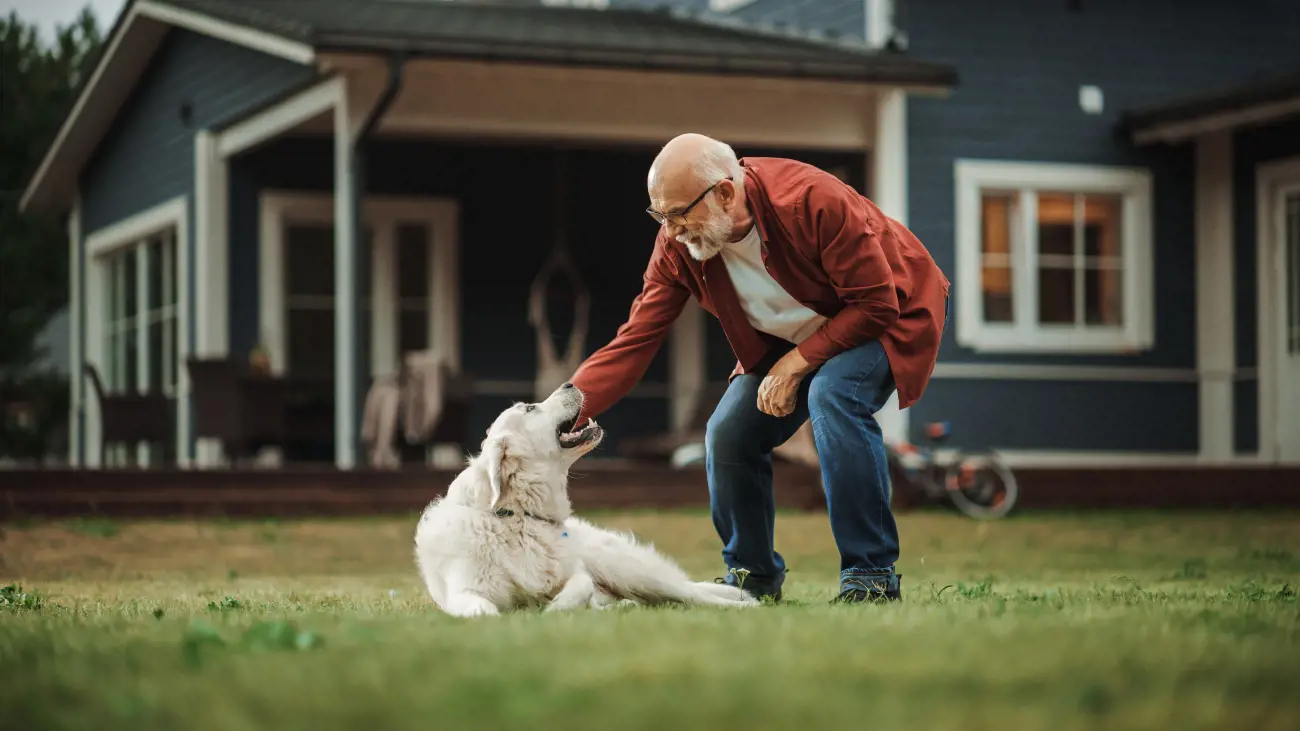How to buy a puppy responsibly
8th February, 2021

Whether you live alone or as part of a large family, buying a puppy is one of the most exciting times for any household. And it should be one of the happiest, too.
Unfortunately, according to the Kennel Club for many puppies and their new owners this is far from the case. With thousands of puppies getting sick in their first year and many owners suffering emotional and financial hardships, the story is not always a happy one.
However, while buying a puppy can be daunting, it’s easy to avoid some of the common mistakes made by first-time owners. By following these simple but crucial steps you’ll be soon on your way to a happy and long life together with your four-legged buddy.
Arranging the right insurance for dogs before getting them home is the best place to start, but how else can caring owners go about buying a puppy responsibly? Here are some top tips to put you on the right path.
Step 1: Do your research
No responsible person would buy a house or a car without putting serious thought into it. And the same goes for any animal lover looking to bring a new puppy into their family.
However, shocking figures from the Kennel Club have shown that one in three people buying a puppy online put less than two hours’ research into the process. Clearly neither the puppy nor the human family is going to benefit from such a lack of preparedness.
To get your research off to the best start, ask yourself these important questions.
Is a puppy right for you and your family?
Getting a puppy is a popular thing for many families to do, but sometimes we can let our hearts rule our heads in the decision. You and anyone else who’ll be caring for the pup need to think long and hard about whether getting a puppy is the right option.
Puppies require a lot of care and attention in order for them to socialise properly and have a happy life as part of your family. If this doesn’t happen when they’re young then it can lead to a whole host of problems later on.
They need plenty of training and guidance, particularly in their first year. Until they know how to behave and are reliably toilet trained, it’s better to keep them closely supervised or contained in a 'dog proof' environment. This means no access to carpets, chemicals, exposed electrical wiring or expensive furniture!
In any event, until they’re over 18 months old you shouldn’t leave them alone for longer than two hours in any one day.
If you can’t keep to this level of care then perhaps consider whether adopting an adult dog might be the better option for you at this time. There are many such canines at rehoming centres around the UK that are longing for a caring, forever home.
That said, if you’re thinking of adopting a dog, then be aware that many shelters will not allow adoption if the dog will be left alone all day. For example, Dogs Trust says that no adult dog should be left alone for more than four hours at a time.

Are you up to the challenge?
Puppies are not easy and you’ll need to be up to the challenge. You’ll need to be unfailingly calm and patient with them as they take their first paw-steps in the world.
You and your family are legally responsible for their care and making sure they are well-trained and that the five basic needs are met in accordance with the Animal Welfare Act.
If you don’t clean up after them or can’t control them around others then you’ll soon find yourself in hot water with the authorities.
Can you afford the long-term costs?
Puppies are precious creatures and are not cheap to buy. Depending on the breed, a puppy can cost anywhere between hundreds and even thousands of pounds. But the costs don’t just stop there.
As well as vets’ fees and regular check-ups, you’ll also need toys, baskets, leads, collars and a whole variety of puppy care kit. Not to mention the rising costs of feeding them.
Dog insurance through Purely Pets can help as it covers vets’ fees, complementary treatments, special diets and more.
Which breed of dog is right for you?
There are so many breeds of dog to choose from, but some first-time owners still just opt for the most popular or Instagrammable pups. This is not a good idea. Many dogs have been bred over the years for particular purposes. So, not all will be suited to your lifestyle.
For example, Greyhounds have been bred for speed rather than endurance and are often happy to just cuddle and don’t require long walks. Whereas breeds like the Border Collie have been bred for their intelligence, agility and love of the working outdoor life.
You can’t expect an active working breed such as this to sit indoors all day and not get bored or frustrated.
There are so many things to think about when buying a puppy that the Dogs Trust has a handy downloadable checklist to help you out.

Step 2: Get your puppy from a reputable source
There are two main ways for responsible dog lovers in the UK to get their hands on a new puppy. The first way is through an animal shelter or rehoming charity. Through no fault of their own, many puppies and pregnant bitches find their way into such places every year.
While these animals are desperate for new homes, a rescue pup isn’t for everyone. So, the second route is via a trustworthy breeder. Unfortunately, there are many unscrupulous dog breeders out there who are solely in it for the profit. To the untrained eye it’s often difficult to spot these individuals.
The Blue Cross has excellent advice on what to look for in a breeder. Signs of a good breeder include:
-
Lots of information in the advert and a waiting list for puppies
-
They want you to meet the puppy several times in their home environment before you buy. Both mother and littermates appear happy and healthy
-
Clean and safe areas for the puppies and mother
-
The puppy has been microchipped and the process of socialisation has begun
-
The breeder is happy to give details of their vet and evidence of relevant health testing
-
The puppy is sold with a contract that promises to take the puppy back if there are any problems
For an extra check, you could visit the Kennel Club Assured Breeder Scheme for advice on breeders.
Step 3: Ask the right questions
A reputable breeder will be happy to answer any of your questions. Indeed, they will probably have plenty of questions for you, too!
Before travelling to see the puppy, these are some useful questions for you to ask:
-
Will the puppy be vaccinated, microchipped and wormed with the relevant health certificates before sale?
-
Have any of the puppies been ill or had ongoing health problems?
-
Can I see the littermates?
-
Can I see the puppy with their mum?
-
Where do the puppies sleep at night?
-
What socialisation have the puppies had so far? Have they started toilet training?
-
Are they Kennel Club registered? (If you’re buying a pedigree pup). If so, can the breeder provide the relevant certificates?
-
Do they have evidence of any screening for common inherited health problems?
-
What happens if any health problems develop? Will the breeder take the puppy back and will you receive a refund?
If the breeder is unhappy answering questions, or something doesn’t seem right, then it might be time to look elsewhere.

Step 4: Meet the pup
You should never buy a pup without meeting them first in their own home. You need to know they are coming from a happy and healthy place. The RSPCA has some great advice on what to look for when meeting them for the first time. They advise you should check for the following:
-
Clear and bright eyes, with no sign of dirt, redness or discharge
-
Clean ears, with no redness, smell or signs of dirty, thick wax
-
Cold and slightly wet nose, with wide open nostrils
-
Breathing should be quiet and effortless
-
Clean, dry skin, with no signs of soreness. Check any folds as these can become infected in certain breeds
-
Mouth and teeth should be clean, with pink healthy gums
-
Shiny and clean coat, with no sign of fleas
-
Strong and sturdy legs
-
Clean and dry bottom with no sign of diarrhoea or parasites
-
While some breeds are skinny, ribs shouldn’t be visible
Obviously a healthy puppy should be bright, active and friendly. Timid or frightened puppies may develop behavioural issues as they get older. Never feel pressured into choosing a particular puppy, it needs to feel right for you both.
You should never take a puppy home with you until they are at least eight weeks old. No responsible breeder would ever send you home with a puppy younger than that.
If you have any concerns whatsoever about the welfare of any of the dogs you see, please contact the RSPCA or the Scottish SPCA if you’re in Scotland. Report any other concerns about the manner in which the puppy is being sold to your local authority’s Trading Standards team.
If you already have a dog insurance policy from Purely Pets, then remember you can also call our free 24-Hour Vet Helpline at any time for advice. All calls to the helpline are answered by registered veterinary nurses with a minimum of three years of practical experience.
Step 5: Get the right paperwork
If you’re looking for a purebred pedigree pooch, then they will likely come with Kennel Club registration.
This means the puppy has been registered with them and is of the breed the seller claims it is. However, this is no guarantee that it’s been health tested.
Certain pedigree breeds have genetic health problems they’ll need to be tested for. Always obtain proof of any vet checks, vaccinations, microchipping, and pedigree papers before handing over your money.
With pedigree papers in particular you need to be careful of fakes. Check with the Kennel Club to ensure they’re genuine.
Having the right vaccinations is essential for your pup’s lifelong health. If the vaccinations aren’t yet complete, then it’s not safe for your puppy to be put on the ground in public places. Make sure you get the vaccination card from the breeder and check that it’s been signed by the vet.

Step 6: Bringing them home
Bringing a new dog home can be exciting and a bit daunting. To help ensure you get off to a good start take a look at the RSPCA’s guide to the puppy’s first year. It’s a great way to become acquainted with what to expect. So the only surprises you encounter are nice ones!
If you already have a dog at home then read our guide to puppy introductions for a stress-free start to family life. Having dog insurance in place to protect both dogs is clearly the first thing you need to arrange before any introductions are made.
Dog insurance for precious pups from Purely Pets
Buying a new puppy and bringing them home is an incredible feeling. However, while a new puppy's life is full of wonder and adventure, sometimes unexpected accidents or illnesses can happen.
Whether it’s something minor or something more serious, treatment for your precious pup can soon get expensive. That’s why having the right dog insurance cover in place is the only way to protect yourself from the financial worry this could bring.
With 15 levels of lifetime cover, the specialist team at Purely Pets has designed a range of policies suitable for every breed and budget. Our policies include cover for vets’ fees ranging from £1,000 to £15,000. Policies can also cover loss by theft or straying.
As well as our award-winning policies and low excess from as little as £60, you also have access to an online policy management portal so you can manage your cover at a time that suits you.
Finding a policy to suit your needs and budget couldn’t be simpler with Purely Pets.
Get a quote for dog insurance today.
Policy benefits, features and discounts offered may very between insurance schemes or cover selected and are subject to underwriting criteria. Information contained within this article is accurate at the time of publishing but may be subject to change.
Helpful Pages
Recent Posts

Why do Great Danes bury their heads?
12/03/25
Find out more about Beagles
28/02/25Pet Insurance Quote
- 98% claims paid *
- Claims paid directly to vets
- 24/7 vet video consultations
- Interest free monthly payments


